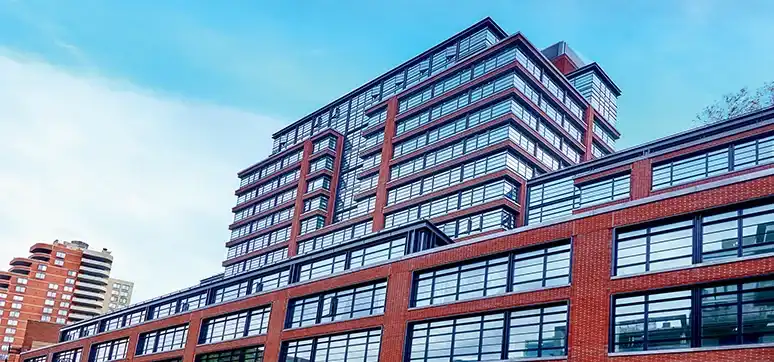What are the advancements in facade technologies & façade materials in the past 5 years?
During the past 5 years, advancement in facade technologies has led to the introduction of innovative curtain wall systems. One of the most significant changes in technical solutions and the aesthetics of high-rise buildings was caused by the role of the contemporary glass façade of the building. It is noticeable in the last few years of development of new advanced façade solutions integrated with plants to combine architectural features and trendsto reduce carbon emissions.

Currently, ventilated double skin façades represent the most valid technology, where shading devices are placed between two layers of glazing, capturing the energy trapped in the cavity. In a naturally ventilated façade, the cavity between the two skins is ventilated with outdoor air. An active wall façade is composed of an external insulating glazing unit and an internal single layer of glass. The cavity between the two skins is ventilated with return room air, which is extracted from the room at the base of the glazing and returned to the air-handling unit at the top. The interactive wall façade has a digital, mechanical adaptive solution system, which can react.
The concept is that the interior side of the façade interacts with its inhabitants, perceiving their body movement and adjusts its form accordingly. The exterior side interacts with the movement of the sun, working as a shade, reacting to environmental changes.
What are the advancements in energy harvesting facade technologies?
The next-gen façades should be able to generate and even store renewable energy. Energy harvesting façades would be the ideal solution, where façades should help the building to generate sufficient energy. This could ensure that the buildings of the future can stay off the pier grid and can truly be self-sustainable. The main advancements of energy harvesting facade technologies are:
• Building Integrated Solar Thermal (BIST)
• Solar Thermal Venetian Blinds (STVB) as adaptive energy harvesting façades
• Solar Thermal Strip Collector (STSC)
• Solar thermal UHPC façade panels
How are products like glass helping in building parametric façades?

Improvements in the manufacturing process have made glass stronger, purer and thinner than ever before. These high-strength sheets can be shaped by machines, in specialised furnaces or on-site, without breaking, enabling architects to create sculptural glass buildings. These façades bend, twist and undulate, proving that in our parametric present, curved glass is the wave of the future.
What is the role of automation in façades and fenestration?
Automation can cover any standard or project-specific solutions for windows and any type of façade project. There is an extremely flexible range of products that can cover project-specific solutions that meet the requirements of modern façades. From an electrical window opener to a control unit and also a variety of smoke ventilators and smart solutions, they all meet the modern façade requirements.
What are Interactive façades?

Adaptive façades can improve the building’s energy efficiency and economics, through their capability to change their behaviour in real-time according to indoor-outdoor parameters, by means of materials, components, and systems. Therefore, adaptive façades can make a significant and viable contribution to meeting the EU´s 2020 targets. Several different types of adaptive façade concepts have already been developed and an increase in emerging, innovative solutions is expected in the near future.
According to recent research, the word ‘adaptive’ in the context of building façades is often associated in the literature with a long list of similar words. Moreover, there is no consistent definition of façade adaptability, although studies exist in relation to characterisation issues, design parameters, and classification. Even within the discipline of architecture and engineering, words such as ‘smart’, ‘intelligent’, ‘interactive’, ‘adaptive’, or ‘responsive’ have been used loosely and interchangeably, creating confusion as to their specific meaning and their conceptual relationship to building performance and design.
What are the future opportunities for smart façades?
In the future, we will see many super tall and smart buildings having complex but efficient structural systems like diagrids, exoskeleton, space trusses, etc. and façades would follow the process. In the next few decades, we will witness multiple options and experiments in automated or electronically controlled dynamic façades with dynamic property changing glass for improved energy efficiency, indoor comfort and overall environmental quality.
The recent progress in computation technology and the availability of diverse software, plug-ins, and coding platforms have provided the tools to identify problems and develop unique design solutions. Emerging facade technologies using complex algorithms and AI will assist designers to understand complex design challenges so as to offer comprehensive distinctive resolutions.














